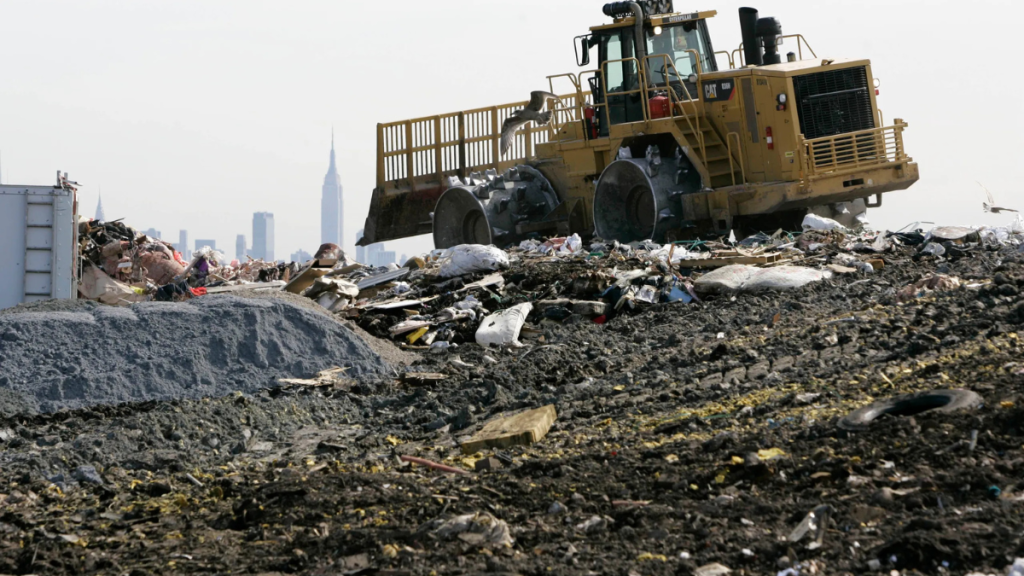Introduction
As the world moves towards carbon neutrality and green economy, landfills, as an important part of urban solid waste treatment, are facing new challenges and opportunities in methane emission management. Traditionally, methane emissions are mostly regarded as an environmental burden, but if their economic costs and resource potential can be scientifically evaluated, they will be expected to be converted into green benefits. This article will analyze the economic impact of methane emissions and explore how high-precision methane detectors can provide data support for landfill operation decisions.
Panoramic Analysis of the Economic Impact of Methane Emissions
1. External Governance Expenditure
Methane contributes greatly to the greenhouse effect, and its fugitive emissions will cause the government to bear high expenses in air governance, ecological restoration, etc. According to data from the German Environment Agency, the social cost of methane emissions is estimated to be about 1,200 euros per ton. If a medium-sized landfill emits 500 tons of methane per year, the hidden social cost can reach 600,000 euros. If the company reduces emissions through active governance, it can not only reduce potential tax risks, but also improve its social image.
2. Direct economic losses to enterprises
Methane leakage is not collected and utilized, which directly causes energy waste. Taking a large landfill in the UK as an example, the income from methane power generation is about 75 pounds per megawatt-hour. Through optimized monitoring and capture, the annual additional available methane electricity reaches 23,000 megawatt-hours, and the increased income exceeds 1.7 million pounds. On the contrary, insufficient monitoring leads to a decrease in capture rate, and enterprises will face huge opportunity cost losses.
3. Carbon credits and market value
The carbon credit trading system provides direct economic incentives for methane emission reduction in landfills. Taking a landfill in Stockholm, Sweden as an example, through an efficient methane management system, annual emissions are reduced by about 20,000 tons of CO2e. Calculated at the current price of about 80 euros/ton in the carbon market, the annual carbon credit income can reach 1.6 million euros. High-precision methane detectors provide continuous and traceable data, which becomes the technical guarantee for carbon emission reduction verification.
The Management Value Of High-Performance Methane Detectors
1. Fine-grained monitoring supports dynamic decision-making
Methane detectors using TDLAS technology have the advantages of high precision, real-time response, and long-term stability. By deploying an intelligent detection network, the operator can grasp the dynamics of methane emissions in the site in real time, adjust the operating status of the capture facilities in a timely manner, and improve energy efficiency and economic benefits.
2. Risk control and compliance assurance
Methane is highly flammable, and leakage risk management is crucial. Real-time monitoring data can be used for risk warning, reduce the incidence of safety accidents, and reduce insurance costs. At the same time, the historical data recorded by the detector meets various compliance audit requirements to avoid penalties due to data gaps.
3. Data value mining
Methane detection data not only serves daily operations, but also serves as an important basis for corporate green financial financing. In many European green bond issuance cases, landfills successfully obtained low-interest financing support by providing detailed methane emission reduction monitoring data, further reducing operating financial costs.
Future Optimization Path
It is recommended that landfill companies establish an intelligent management platform based on high-performance methane detectors, integrate technologies such as drone inspections, the Internet of Things, and big data analysis, to achieve full visualization of emissions and intelligent decision-making. At the same time, pay close attention to changes in carbon market policies, fully release the economic value of emission reduction data, and promote the transformation of landfills from cost centers to value creation centers.
Conclusion
There is a huge economic impact behind methane emissions from landfills. Through scientific evaluation and intelligent monitoring, companies can not only avoid hidden costs, but also tap into the potential for green revenue. In the future, methane detection technology will become an indispensable tool for the green transformation of landfills, helping the high-quality development of the global low-carbon economy.

